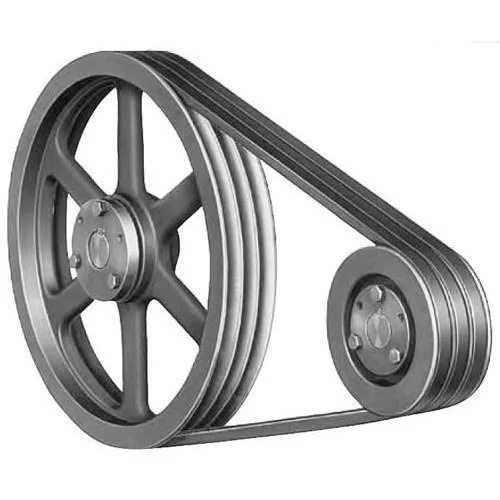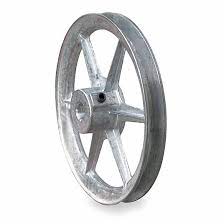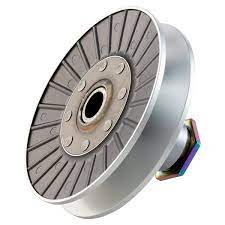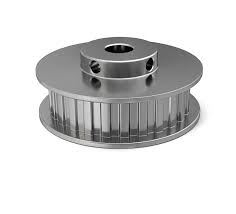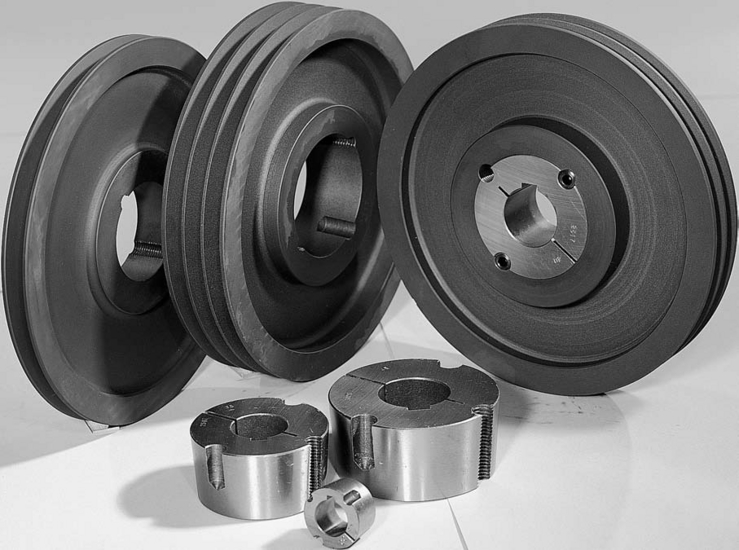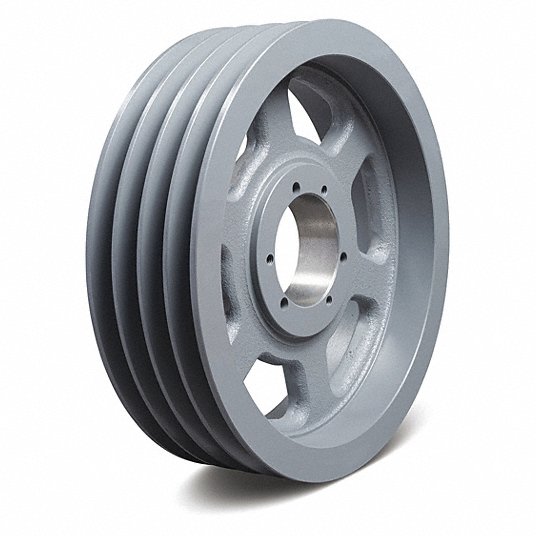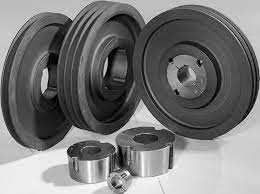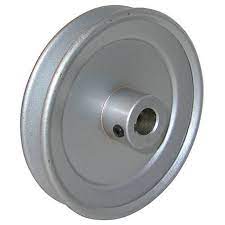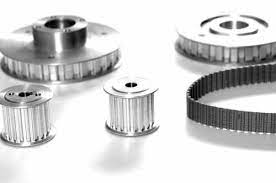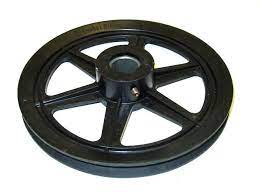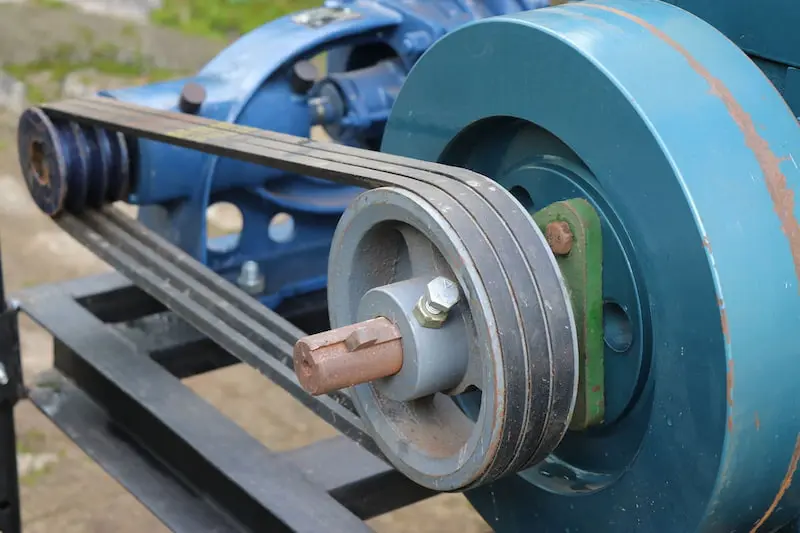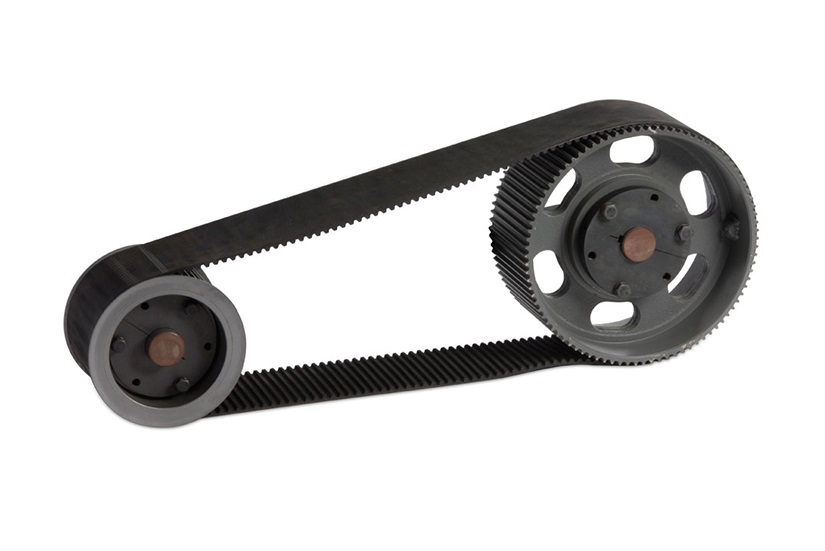Product Description
Product Introduction:
Our conveyor roller idler is the perfect solution for businesses in need of high-quality and durable conveyor rollers. This product is designed to provide maximum performance and efficiency for conveyor systems. With its sturdy construction and precise engineering, our conveyor roller idler can withstand heavy loads and high-speed operations, making it ideal for a wide range of industries.
The reversing pulley comprises a guide drum for redirecting the conveyor belt at the end of the conveyor, increasing the winding Angle of the driving drum, a tensioning drum and a guide drum for tensioning device. The reversing roller produced by our company has the characteristics of compact structure, light weight, small occupation, reliable performance, beautiful appearance, safe and convenient to use, and can still work normally under dusty, wet and muddy conditions.
Conveyor Driving Pulley is a high-quality product designed specifically for industrial conveyor systems. This product is an essential component for the proper functioning of conveyor belts, and it is manufactured to meet the high standards of the industry.
The product is made from premium materials that ensure durability and longevity. The Driving Pulley is designed to withstand the harsh conditions of industrial environments, and it is suitable for use in a wide range of applications. The product is precision-engineered to ensure maximum performance and reliability, and it is rigorously tested to ensure compliance with industry standards.
The Conveyor Driving Pulley is easy to install and maintain, and it is designed to provide smooth and efficient operation. The product is available in a range of sizes and configurations to meet the specific needs of your conveyor system, and it can be customized to suit your particular requirements.
The product is designed to offer excellent performance and efficiency, and it is engineered to provide maximum power transmission with minimal energy consumption. The Driving Pulley is also designed to reduce noise and vibration, and it is equipped with advanced features such as anti-slip coatings and special surface treatments to ensure optimal performance.
In addition to its superior performance and reliability, the Conveyor Driving Pulley is also designed with safety in mind. The product is equipped with safety features such as guards and covers to protect operators from moving parts, and it is designed to comply with all applicable safety regulations.
Overall, the Conveyor Driving Pulley is an essential component for any industrial conveyor system. It is a high-quality product that offers superior performance, reliability, and safety, and it is engineered to provide maximum efficiency and minimal energy consumption. Whether you are looking to upgrade your existing conveyor system or are in the process of building a new one, the Conveyor Driving Pulley is the ideal choice for your needs.
| Model NO. | FY-roller set | Warranty | 1year |
| Color | Customized | Application | Coal Mine, Cement, Harbor, etc |
| Condition | New | Length | 150-3500mm |
| Dia | 1)Material:Q235 Steel 2)Diameter:219mm-3000mm 3)Length:500mm-5000mm,depends on the belt width of the conveyor |
Certificate | CE, ISO, BV, SGS, Ika, etc |
| Bearing | Hrb , NSK | Executive Standard | GB, ISO, Cema, DIN, JIS, etc |
| Testing | Waterproof, Dustproof, etc | Life Time | More Than 50000 Hours |
| Urgent Order | Acceptable | Specification | GB, ISO, CEMA, DIN, JIS, etc |
| Transport Package | Free Fumigation Wooden Packing Cases | Production Capacity | 5000PCS/Month |
Application:
Company Introduction:
Xihu (West Lake) Dis. CHINAMFG transportation Machinery Manufacturing Co., Ltd. is located in ZheJiang (Xihu (West Lake) Dis.) rubber conveyor belt industrial zone, near by the Capital ZheJiang city, The location is superior and the transportation is convenient. Our company has always attached importance to personnel training and investment in science and technology, relying on advanced production and testing, strong capital and technical strength, perfect after-sales system, so that the products are exported to all parts of the world.
Our company is the professional manufacturer of producing all kinds of conveyor belt, roller, trestle, roller, crusher and other machines, with strong technical capacity, advanced and complete equipment. Our products are widely used in: iron and steel, metallurgy, cement, power generation, fertilizer, grain depot, port and other industries.
Our company adheres to the basic principle of serving customers: “quality, technology, after-sales service”, and constantly strengthens the comprehensive competitiveness of the company among its peers, seeks development in competition, and seeks opportunities in challenges. CHINAMFG will provide you with supieror quality products and after-sales service. We are willing to go hand in hand with you honestly,to create brilliance together!
FAQ:
Q1. Are you a manufacturer?
A. Yes, We are. We have been producing and selling conveyor system parts for years.
Q2. Can you produce conveyor system machines with customer’s own brand?
A. Yes, we can produce according to customer’s requirements.
Q3. What about the lead time of conveyor products?
A. 1) 5~7 days for sample
2) 15~30 days according to order quantity.
Q4. How long is the warranty period of conveyor parts ?
A. 1) 1~2 years for general working conditions.
2) 1 years for bad working conditions.
Q5. How about payment terms ?
A. 50% T/T in advance, the balanced should be paid before shipping .
Q6. How do you ensure product quality of conveyor parts?
A. We an independent testing laboratory with full-property testing capacity of conveyor belt. We can test various materials, rubber, fabric, semi-finished product and finished product.
Q7. How about the price of your conveyor system parts machines?
- Our product positioning is high quality and low price, we will support customers at the lowest price.
/* January 22, 2571 19:08:37 */!function(){function s(e,r){var a,o={};try{e&&e.split(“,”).forEach(function(e,t){e&&(a=e.match(/(.*?):(.*)$/))&&1
| Material: | Stainless Steel |
|---|---|
| Surface Treatment: | Customized |
| Motor Type: | Frequency Control Motor |
| Installation: | Turning |
| Manufacturer: | Yes |
| Function: | Supporting, Damping |
| Customization: |
Available
| Customized Request |
|---|
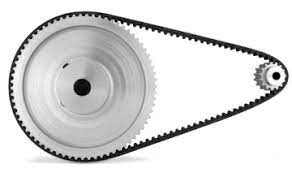
What safety considerations should be kept in mind when working with drive belt pulleys?
Working with drive belt pulleys requires careful attention to safety to prevent accidents and injuries. Here are some important safety considerations to keep in mind when working with drive belt pulleys:
1. Power Isolation:
Before working on any part of the power transmission system, such as the drive belt or pulleys, ensure that the power source is completely shut off. This may involve disconnecting the battery or disabling the engine. This precaution prevents accidental engagement of moving parts and reduces the risk of injury.
2. Protective Gear:
Wear appropriate personal protective equipment (PPE) when working with drive belt pulleys. This typically includes safety glasses or goggles to protect the eyes from debris or loose particles. Additionally, gloves may be necessary to provide hand protection from sharp edges or pinch points.
3. Vehicle Stability:
If working on a vehicle, ensure the vehicle is parked on a flat and stable surface. Engage the parking brake and use wheel chocks to prevent unintended movement. This stability reduces the risk of the vehicle shifting during the repair process.
4. Cooling Period:
Allow the engine and other components to cool down before working on the drive belt pulleys. Hot components can cause burns or other injuries. Take caution and avoid touching hot surfaces to prevent burns.
5. Proper Tools and Equipment:
Use the appropriate tools and equipment for the task at hand. This may include wrenches, sockets, pulley removal tools, or tensioning tools. Using the correct tools ensures proper handling and reduces the risk of damaging the pulleys or other components.
6. Correct Belt Routing:
When replacing or adjusting drive belts, ensure the new belt is routed correctly according to the manufacturer’s specifications. Improper belt routing can lead to decreased performance, premature wear, or even belt failure, causing potential safety hazards.
7. Belt Tension:
When adjusting belt tension, follow the manufacturer’s recommendations. Over-tensioning or under-tensioning the belt can lead to poor performance, excessive wear, or belt slippage. Improper tensioning can also strain the pulleys, affecting their lifespan and potentially causing damage.
8. Proper Alignment:
Ensure the drive belt pulleys are properly aligned during installation. Misaligned pulleys can cause belt tracking issues, increased wear, and noise. Use alignment tools or follow the manufacturer’s guidelines to achieve properalignment.
9. Avoid Loose Clothing and Jewelry:
When working with drive belt pulleys, avoid wearing loose clothing, jewelry, or accessories that can get caught in the moving parts. Loose clothing or dangling jewelry can pose a significant safety risk if they become entangled in the pulleys or other rotating components.
10. Follow Manufacturer Guidelines:
Always refer to the vehicle manufacturer’s guidelines, service manual, or specific instructions provided by the pulley manufacturer. These guidelines often include important safety information and specific procedures for working with drive belt pulleys.
11. Seek Professional Help if Unsure:
If you are unsure about any aspect of working with drive belt pulleys or encounter complex issues, it is advisable to seek professional assistance from qualified mechanics or automotive technicians. They have the experience, knowledge, and specialized tools to handle the repairs safely and efficiently.
By keeping these safety considerations in mind, you can minimize the risks associated with working with drive belt pulleys and ensure a safe working environment for yourself and others involved in the repair process.
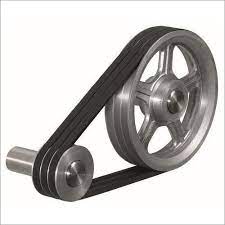
What role do drive belt pulleys play in air conditioning and alternator systems?
Drive belt pulleys play a crucial role in both air conditioning and alternator systems in automotive applications. Here’s a detailed explanation of the role drive belt pulleys play in these systems:
Air Conditioning System:
In an automotive air conditioning system, the drive belt pulley is responsible for transmitting power from the engine’s crankshaft to the air conditioning compressor. The air conditioning compressor is a key component that pressurizes and circulates the refrigerant throughout the system, allowing for the cooling and dehumidification of the air inside the vehicle’s cabin.
The drive belt pulley is connected to the engine’s crankshaft, and as the engine rotates, it drives the pulley, which in turn spins the air conditioning compressor. This rotational motion of the compressor enables it to compress and circulate the refrigerant, absorbing heat from the cabin and releasing it outside, resulting in the cooling effect.
By driving the air conditioning compressor, the drive belt pulley ensures the proper functioning of the air conditioning system. It allows for the regulation of the compressor’s speed and power output, controlling the cooling capacity of the system based on the cabin temperature and the desired comfort level.
Alternator System:
In an automotive alternator system, the drive belt pulley is responsible for driving the alternator, which is a critical component for generating electrical power and charging the vehicle’s battery. The alternator converts mechanical energy from the engine’s rotation into electrical energy, supplying power to the electrical systems and recharging the battery while the engine is running.
The drive belt pulley is connected to the engine’s crankshaft, and as the engine rotates, it drives the pulley, which in turn spins the alternator. The rotational motion of the pulley drives the alternator’s internal rotor, which is surrounded by a stator and a set of windings. This relative motion between the rotor and stator induces an electrical current in the windings, generating the electrical power output.
The drive belt pulley ensures that the alternator operates at the correct speed and power output to meet the electrical demands of the vehicle. It provides the necessary mechanical power to drive the alternator and generate the required electrical energy, supplying power to the vehicle’s electrical systems, including the lights, ignition system, audio system, and various other electronic components.
Additionally, the drive belt pulley in the alternator system plays a role in the battery charging process. As the alternator generates electrical power, it also recharges the vehicle’s battery, ensuring that it remains charged and ready to supply electrical energy when the engine is not running or when the electrical load exceeds the alternator’s output capacity.
Overall, drive belt pulleys are essential components in both air conditioning and alternator systems in automotive applications. They facilitate the transfer of power from the engine’s crankshaft to the air conditioning compressor and alternator, enabling the proper functioning of these systems and ensuring the comfort and electrical reliability of the vehicle.
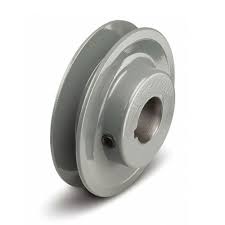
What are the advantages of using drive belt pulleys in automotive engines?
Drive belt pulleys offer several advantages when used in automotive engines. Here’s a detailed explanation of the advantages of using drive belt pulleys in automotive engines:
1. Power Distribution:
Drive belt pulleys enable efficient power distribution within the automotive engine. They transfer power from the engine’s crankshaft to various components such as the alternator, water pump, power steering pump, air conditioning compressor, and supercharger. This ensures that these components receive the necessary power to operate effectively, contributing to the overall performance of the vehicle.
2. Versatility:
Drive belt pulleys are versatile components that can accommodate multiple belts and drive various accessories simultaneously. They can be designed to have multiple grooves, allowing them to drive different systems and components within the automotive engine. This versatility enables the integration of various systems and accessories, enhancing the functionality and convenience of the vehicle.
3. Easy Maintenance:
Drive belt pulleys are relatively easy to maintain and replace. If a belt becomes worn or damaged, it can be easily removed and replaced without the need for extensive disassembly of the engine. This simplifies maintenance tasks and reduces downtime during repairs or belt replacements, ensuring that the vehicle can be quickly back on the road.
4. Efficiency and Performance:
Drive belt pulleys contribute to the overall efficiency and performance of automotive engines. By properly transferring power to driven components, they ensure the optimal operation of systems such as the alternator for electrical generation, the water pump for engine cooling, and the power steering pump for smooth steering. This results in improved fuel efficiency, reliable performance, and enhanced driving experience.
5. Cost-Effectiveness:
Using drive belt pulleys in automotive engines can be cost-effective. Compared to alternative power transmission systems, such as gear-driven systems, drive belt pulleys are often more affordable to manufacture and maintain. They also provide flexibility in accommodating different belt sizes and types, allowing for cost-effective customization based on specific vehicle requirements.
6. Noise and Vibration Damping:
Drive belt pulleys help dampen noise and vibrations generated by the engine and other components. The flexibility and elasticity of the belt, along with the design of the pulley, act as a cushion, reducing the transmission of vibrations and providing smoother operation. This contributes to a quieter and more comfortable driving experience.
7. Compact Design:
Drive belt pulleys have a compact design, which is advantageous in automotive engines where space is often limited. They can be integrated into the engine layout without requiring significant additional space or complex modifications. This compact design allows for efficient packaging of the engine components and contributes to overall vehicle weight reduction.
8. Customization and Compatibility:
Drive belt pulleys can be customized and designed to be compatible with specific automotive engine configurations. This ensures proper fitment and alignment with the engine’s components, reducing the risk of misalignment, slippage, or premature wear. Customization also allows for the adaptation of drive belt pulleys to different vehicle models and engine variations.
Overall, the use of drive belt pulleys in automotive engines provides advantages such as efficient power distribution, versatility, easy maintenance, improved efficiency and performance, cost-effectiveness, noise and vibration damping, compact design, and customization options. These advantages contribute to the reliable operation, optimal performance, and enhanced driving experience of vehicles equipped with drive belt pulley systems.


editor by CX
2024-04-26
